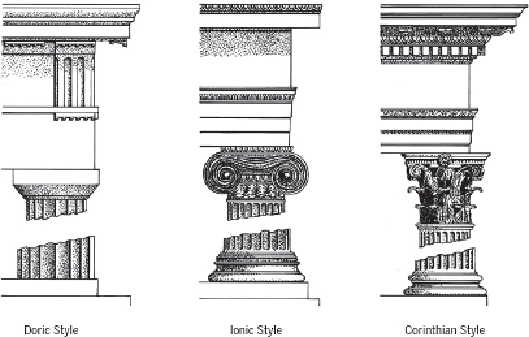Travel Reference
In-Depth Information
Hellenistic Citizens
In the twilight years of the classical age (from about the late 4th century BC), cosmopol-
itan folks started to weary of temples, casting their gaze towards a more decadent urban
style. The Hellenistic architect was in hot demand for private homes and palace
makeovers as wealthy citizens, dignitaries and political heavyweights lavishly remod-
elled their abodes in marble, and striking mosaics were displayed as status symbols (read
more
bling). The best Hellenistic ancient home displays are the grand houses at Delos.
Byzantine Zeal
Church-building was particularly expressive during Byzantium in Greece (from around
AD 700). The original Greek Byzantine model features a distinctive cross-shape; essen-
tially a central dome supported by four arches on piers and flanked by vaults, with smal-
ler domes at the four corners and three apses to the east. Theologian architects opted for
spectacular devotional mosaics and frescoes instead of carvings for the stylistic religious
interiors. In Athens, the very appealing 12th-century Church of Agios Eleftherios incor-
porates fragments of a classical frieze in Pentelic marble. The charming 11th-century
Church of Kapnikarea sits stranded, smack bang in the middle of downtown Athens - its
interior flooring is of coloured marble and the external brickwork, which alternates with
stone, is set in patterns. Thessaloniki's 8th-century Church of Agia Sofia, with her 30m-
high dome, is a humble version of her sister namesake in İstanbul. There are numerous
Byzantine chapels in Mystras, many of which were originally private chapels attached to

